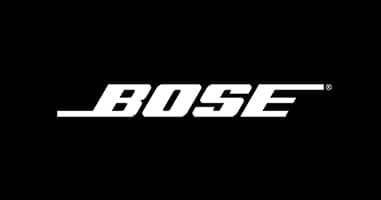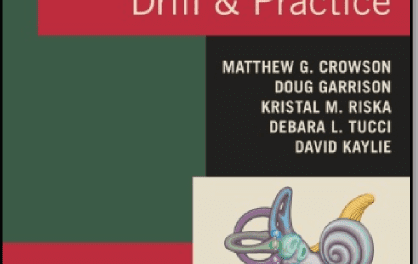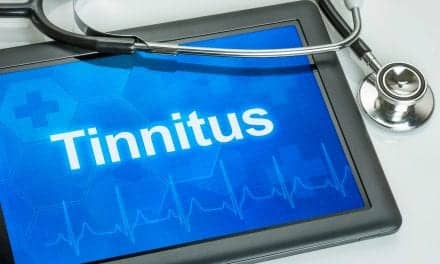
Bose filed a De Novo application in May 2018 for its self-fitting Bose Hearing Aid, a user-fitted wireless air conduction hearing aid intended for mild-to-moderate hearing loss that can be adjusted through a mobile application without the assistance of a healthcare professional. By granting it De Novo status in October 2018, FDA allowed marketing of the first self-fit hearing device (although Bose has not released the device yet). It’s important to note that the self-fitting device is not part of—and should not be confused with—the upcoming new class of over-the-counter (OTC) hearing devices for which the FDA is expected to propose regulations this month.
De Novo is a risk-based classification process intended to provide the US Food and Drug Administration (FDA) with an efficient pathway for classifying novel medical devices—those that don’t fit into an existing category—but for which FDA’s general controls and/or special controls provide reasonable assurance of safety and effectiveness for intended use. Class II is the most-common category, meant for devices that pose moderate-to-high risk to the patient and/or user, and includes most wireless hearing aids, as well as items like wheelchairs and pregnancy testing kits. In the recent filing, Lowell J. Schiller of the FDA states “we believe this action will enhance patients’ access to beneficial innovation, in part by reducing regulatory burdens by placing the device into a lower device class than the automatic class III [high risk] assignment.”
Self-fitting air-conduction hearing aid: a wearable sound amplifying device that is intended to compensate for impaired hearing and incorporates technology, including software, that allows users to program their hearing aids. This technology integrates user input with a self-fitting strategy and enables users to independently derive and customize their hearing aid fitting and settings.
According to Schiller, the FDA has named the generic type of device a “self-fitting air-conduction hearing aid, and it is identified as a wearable sound amplifying device that is intended to compensate for impaired hearing and incorporates technology, including software, that allows users to program their hearing aids. This technology integrates user input with a self-fitting strategy and enables users to independently derive and customize their hearing aid fitting and settings.”
The Agency listed several “identified risks” inherent in a self-fitting hearing device, including excessively high sound output levels, user error, device malfunction, interference with other electronic devices, and missed or delayed medical diagnosis/treatment. It also listed “mitigation measures” to help alleviate these concerns, including electroacoustic performance testing, software verification, electromagnetic compatibility (EMC) testing, verification/validation and hazard analysis, and product labeling. Special controls include:
1) Clinical data that evaluates the effectiveness of the self-fitting strategy;
2) Electroacoustic parameters like MPO, distortion levels, self-generated noise, latency, and frequency response;
3) EMC and thermal/electrical safety;
4) Software verification, validation, and hazard analysis;
5) Safety and labeling requirements related to devices incorporating wireless technology;
6) Demonstration that the device can be used by consumers as intended;
7) Patient labeling about who is a candidate for the device, when professional help is warranted, warnings about using hearing protection in loud environments and staying alert to sounds around the user, technical information about EMC, and how to correctly use and maintain the device.
Previously, there was no classification category for a self-fitting hearing aid—the reason for Bose’s De Novo filing. Although it’s possible Bose may ultimately request that the self-fitting Bose Hearing Aid be reclassified as an OTC hearing device, FDA regulations for an OTC device do not yet exist. The FDA issued a letter last year cautioning hearing aid manufacturers against marketing their products as an over-the-counter (OTC) hearing aid for that reason.
International Trade Commission rules in Bose’s favor for in-ear headphone patent-infringement. According to an article written by Matthew Santoni at Law360.com, the US International Trade Commission has barred the importation and sale of in-ear headphones that allegedly infringe on five patents held by Bose, as well as possibly a sixth patent. The general exclusion order relates to patents on Bose’s “StayHear” headphone tips following a ruling by an administrative judge in June 2019 that Bose had demonstrated the imported products—which were either earbuds or attachments that fit over other companies’ earbuds—were in violation the patents.
Bose claimed that 14 companies had infringed on some or all of its six patents and should therefore be barred from importation or sale. The cease-and-desist orders reportedly apply to the US companies V4INK, 1MORE USA Inc, Beeebo Online Ltd, Phaiser LLC, and REVJAMS; and the Shenzhen, China based companies Misodiko, Phonete, and TomRich.
Click here to see the full story at 360Law.com.






